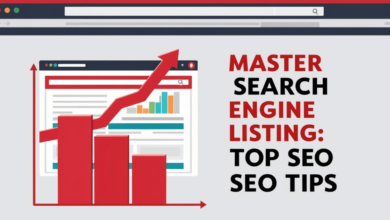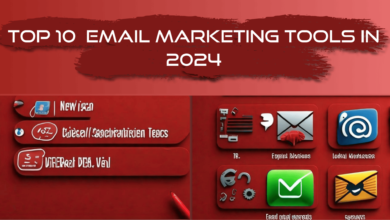
Effective project management is more crucial than ever in today’s fast-paced work environment. With numerous tools available, finding the right fit for your team can be a daunting task. To simplify your decision-making process, we’ve compiled a list of the Top 10 Best Project Management Tools of 2024, highlighting their standout features, pros, and cons.
What is Project Management?
Project management is the process of planning, executing, and overseeing a project to achieve specific goals within a defined timeline and budget. It involves coordinating resources, managing risks, and ensuring communication among stakeholders. Effective project management helps teams stay organized, meet deadlines, and deliver high-quality results.
Why Choosing the Right Project Management Tool is Important
Selecting the right project management tool is essential because it can significantly impact your team’s efficiency and collaboration. The right tool streamlines workflows, enhances communication, and provides visibility into project progress, ultimately leading to better outcomes. With the vast array of options available, choosing a tool that fits your team’s unique needs can transform how you manage projects.
Top 10 Best Project Management Tools of 2024
After extensive research, we’ve identified the top, we have identified Top 10 Best Project Management Tools of 2024.
-
Trello
Pros:
- User-Friendly Interface: Trello’s card-and-board system is intuitive and visually appealing.
- Flexibility: Great for various project types, from simple to complex.
- Integrations: Easily connects with other tools like Slack and Google Drive.
Cons:
- Limited Functionality for Complex Projects: Might fall short for teams needing advanced features like Gantt charts.
- Overwhelming for Large Teams: Can become cluttered with too many cards.
-
Asana
Pros:
- Task Management: Excellent for tracking tasks, deadlines, and project milestones.
- Collaboration Features: Real-time updates and team communication tools enhance collaboration.
- Customizable Dashboards: Tailor views to fit your project needs.
Cons:
- Learning Curve: Some users may find the interface complex initially.
- Pricing: Advanced features can get pricey for larger teams.
-
Monday.com
Pros:
- Highly Customizable: Adaptable to various workflows and project types.
- Visual Project Tracking: Color-coded timelines and boards make tracking progress easy.
- Automation: Automate repetitive tasks to save time.
Cons:
- Can Be Overwhelming: The vast array of features may be too much for smaller teams.
- Costly: Pricing can escalate with added features.
-
ClickUp
Pros:
- All-in-One Solution: Combines tasks, docs, goals, and chat in one platform.
- Custom Features: Highly customizable workflows to fit any team’s needs.
- Affordability: Competitive pricing, offering a lot of features for the cost.
Cons:
- Overloaded Interface: Can feel cluttered and confusing for new users.
- Performance Issues: Some users report slow load times with larger projects.
-
Basecamp
Pros:
- Simplicity: Focuses on essential features, making it easy to use.
- Flat Rate Pricing: Affordable for teams of all sizes, no per-user fees.
- Client Access: Allows easy collaboration with clients without needing extra licenses.
Cons:
- Limited Customization: Less flexibility in features compared to competitors.
- Basic Reporting: Lacks advanced reporting and analytics tools.
-
Jira
Pros:
- Ideal for Agile Teams: Tailored for software development and Agile methodologies.
- Powerful Reporting: Advanced reporting features to track project progress.
- Integration with Developer Tools: Seamlessly integrates with other development tools.
Cons:
- Steep Learning Curve: Can be complicated for teams not familiar with Agile.
- Limited Use for Non-Tech Projects: Primarily designed for software teams.
-
Wrike
Pros:
- Versatile Project Management: Suitable for teams of all sizes and industries.
- Time Tracking Features: Built-in time tracking and reporting.
- Resource Management: Effective tools for managing team resources and workload.
Cons:
- Complex Setup: Initial setup can be time-consuming.
- Pricey: Advanced features may require higher-tier plans.
-
Smartsheet
Pros:
- Spreadsheet Interface: Familiar interface for users comfortable with spreadsheets.
- Powerful Collaboration Tools: Facilitates teamwork with sharing and comment features.
- Automations and Templates: Helps streamline repetitive tasks with automation.
Cons:
- Complex for Beginners: Can be overwhelming for users unfamiliar with spreadsheets.
- Cost: Pricing can add up with advanced features.
-
Notion
Pros:
- Highly Customizable Workspace: Adaptable for note-taking, project management, and team collaboration.
- Integrated Database Features: Great for organizing information in various formats.
- Visual Appeal: Clean and aesthetically pleasing design.
Cons:
- Steep Learning Curve: Can be challenging for new users to navigate.
- Limited Project Management Features: May not have as many robust features as dedicated tools.
- Airtable
Pros:
- Database Functionality: Combines the power of a spreadsheet with database capabilities.
- Visual Layouts: Offers multiple views, such as grid, calendar, and Kanban.
- Integrations: Connects easily with other apps for seamless workflows.
Cons:
- Complexity for Simple Projects: Overkill for straightforward task management.
Pricing Model: Costs can escalate with usage and premium features.
These are the Top 10 Best Project Management Tools of 2024. Choosing the right project management tool for your team in 2024 can dramatically enhance productivity and streamline workflows. Consider your team’s specific needs, budget, and project complexity when making your decision. With the options listed above, you’ll be well on your way to selecting the best fit for your project management needs!
Factors to Consider When Choosing the Best Project Management Tool
When selecting a project management tool, several key factors should guide your decision. First and foremost, consider your team’s specific needs and workflows. Different teams require different functionalities; for example, a software development team may prioritize Agile features, while a marketing team might need robust collaboration tools. Next, evaluate the user interface and ease of use—an intuitive design can enhance adoption and reduce training time. Additionally, think about scalability; the tool should be able to grow with your team as project demands increase.
Integration capabilities are also critical—look for tools that seamlessly connect with the other software your team relies on. Finally, assess your budget, as costs can vary significantly across platforms. By weighing these factors, you can choose a project management tool that not only fits your current needs but also supports your team’s long-term success.
Frequently Asked Questions (FAQs)
FAQs regarding Top 10 Best Project Management Tools of 2024.
-
What is a project management tool?
A project management tool is software that helps teams plan, execute, and track projects efficiently. These tools facilitate collaboration, task assignment, timeline management, and resource allocation, ensuring that projects are completed on time and within budget.
-
Why do I need a project management tool?
Using a project management tool enhances organization and communication within a team. It helps track progress, manage deadlines, and allocate resources effectively, ultimately leading to increased productivity and better project outcomes.
-
How do I choose the right project management tool for my team?
Consider factors such as your team’s size, specific needs, ease of use, integration capabilities, scalability, and budget. Assessing these factors will help you find a tool that aligns with your workflow and goals.
-
Are there free project management tools available?
Yes, many project management tools offer free plans with basic features. Tools like Trello, Asana, and ClickUp provide free versions suitable for small teams or simple projects, although advanced features typically require a paid subscription.
-
Can project management tools integrate with other software?
Most modern project management tools offer integration capabilities with various applications, such as communication tools (e.g., Slack), file storage services (e.g., Google Drive), and time-tracking software. This enhances workflow efficiency by connecting different aspects of your team’s operations.
-
What are the common features of project management tools?
Common features include task management, timeline and Gantt chart views, collaboration tools (such as comments and file sharing), reporting and analytics, time tracking, and resource management. The availability of these features may vary by tool.
-
How can project management tools improve team collaboration?
Project management tools enhance collaboration by providing a centralized platform for communication, task assignment, and progress tracking. Team members can share updates, feedback, and files in real-time, reducing miscommunication and improving transparency.
-
What should I do if my team struggles to adapt to a new project management tool?
If your team faces challenges adapting to a new tool, consider providing training sessions and resources. Encourage open communication about difficulties and seek feedback to address concerns. Gradually introduce features to avoid overwhelming team members.
Checkout How Many Words Should H2 Headings Be for Optimal SEO?



